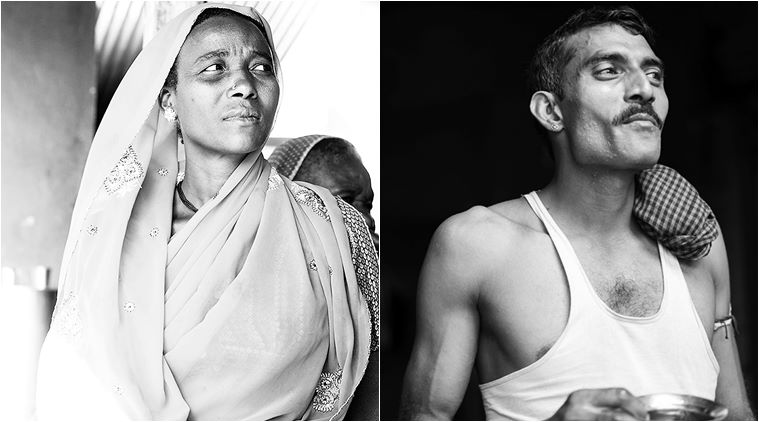 (Left) Farmer Rameejabi; porter Amar Singh
(Left) Farmer Rameejabi; porter Amar Singh
Amar Singh, a migrant from Rajasthan, earns a living by carrying loads for spice trading companies in Old Delhi’s Gadodia Market, Asia’s largest spice market located in Khari Baoli. But on Sunday, his day off, he emerges clean shaven and bathed. It’s this look that Pakistani-American photographer Sarah K Khan captures in her exhibition ‘In/Visible: Portraits of Farmers and Spice Porters, India’, with 13 frames, curated by Grace Aneiza Ali, at New York University’s Kimmel Windows Galleries.
Khan has been photographing the market since 2001, when she first came to India as a Fulbright Scholar. But it was only in 2014 that she got to know some of the porters closely. They started inviting her for meals on Sundays, when they could afford to relax. The photographs, six-feet high, show the men striking their best poses, they are seen dyeing their hair with henna, shaving, cooking, and talking on the phone.
“Migrants populate the market for jobs. The reasons for migration are many and Old Delhi and Khari Baoli overflow with much migrant diversity. I want to highlight that most migrants anywhere work hard to make a living, with dignity, and I wanted to capture those moments,” she says, who has studied public health and nutrition at University of Columbia. The idea came from several sources over time — food, healing, family, and people such as farmers, cooks, laborers, migrants, immigrants, who grow, cook and manage the food we eat.
The exhibition isn’t her only connection to Old Delhi, her father’s family migrated from the area during Partition. “My grandfather, among other things, was a hakim. My father’s family then migrated to the US. I consider myself partitioned once, migrated twice. In these especially xenophobic times, a hatred for the ‘other’ and the immigrant is unconscionable,” she says, “The source of flavour and taste, this centre of spices in Delhi motivated me as did knowing that my father and his family walked these
same streets.”
A part of the exhibition also has portraits of women farmers who Khan met during her travels in the Indian hinterlands. She had received another Fulbright scholarship to research and document women farmers in 2014, and then she worked with Mirasi caste singers in Rajasthan, Siddi women farmers in Karnataka, women rice farmers in Nagaland, Adivasis in Telangana, millet processors in Andhra, and women street vendors in Delhi.
“The women I engaged with were knowledgeable about local cultures, paid astute attention their environment, resources, and training. They were seed savers, growers of crops, foragers, hunters, and food processors, and culinary experts. All of them struck a chord with me. There are 95 million women farmers in India, their informal labour and their extraordinary contributions are undervalued,” she says. The show ends in September.